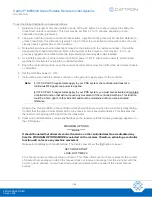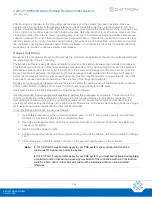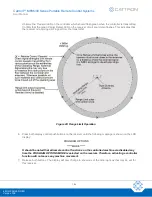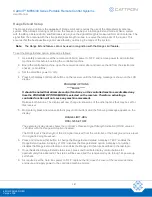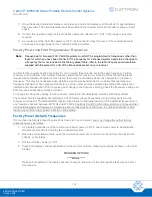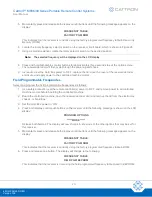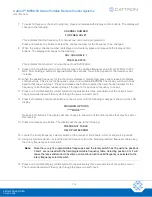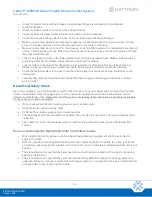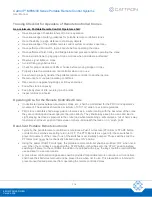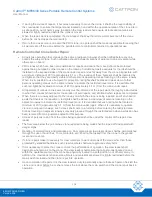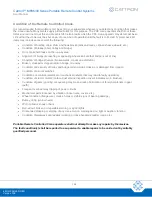
Cattron™ MP96/48 Series Portable Remote Control Systems
User Manual
115
68C-MP96/48-RD-EN
Version 006
•
Check for proper fluid levels and make sure all grease fittings are lubricated to manufacturer
recommendations
•
Check for broken welds and cracks in the bridge structure
•
Check for wheel damage, broken welds on the frame and drum damage
•
Check the wheels for flange wear, cracks, holes or visible signs of bearing damage
•
Make sure wire rope drums show proper wire rope lay; for example, each wire rope must lay in its own
groove. This does not mean in the non-grooved area in the center of the drum
•
Make sure wire rope size is correct for the sheaves. Look for either oversized or undersized rope that will
not lay in the sheaves correctly. Make sure the sheaves show no evidence of rope corrugation and have
the proper wall thickness
•
Look for any type of bluing on the brake drums which indicates excessive heat. Make sure there are no
protruding rivets from the brake shoes. Examine the shoes for glazing
•
Look for carbon dust around the inspection covers of electric motors. Smell for any type of burning.
Check for any type of burning on electrical covers. Make sure all protective covers are installed
•
Check the festoon system for proper connections and inspect all hooks connecting the festoon to the
holding wire
•
Load bearing parts such as blocks and hooks shall have no signs of damage and shall be in perfect
working order
Operational Safety Check
As a crane operator, you should satisfy yourself of the following. If any item below does not meet the checklist
criteria, immediately notify your supervisor. In many cases, the problem will need to be fixed before you are
allowed to operate the crane. Remember that the person now reading these instructions is primarily responsible
for his or her own health and safety!
•
Horns, buzzers and all other warning devices are in working order
•
All controls are in good working order
•
STOP Buttons (when equipped) are in working order
•
The load brakes hold the load safely at all times; the only way to ensure this is through a load test and
inspection
•
The ‘raise’ and ‘lower’ limit switches work correctly to help prevent two-blocking and accidental floor
contact
Persons Authorized to Operate Remote Controlled Cranes
•
Only properly trained employees who have been designated by management shall be permitted to
operate the crane
•
Both the operator and management shall ensure the correct controller to operate the crane is selected
and that any spare equipment capable of controlling the crane is completely isolated and held under lock
and key
•
The crane shall not be operated by personnel who cannot read and understand the signs, notices and
operating instructions
•
The crane shall not be operated by personnel with seriously defective eyesight or hearing, personnel
under the influence of drugs or alcohol that will impair judgment, or personnel who may be suffering from
a disease which may cause physical failure


